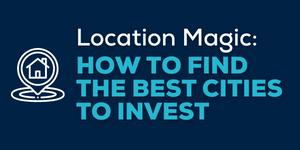
How to Hire and Manage Virtual Assistants
Now we’ve got two or three people that are not working on the tech side. There’s a few people that have read my post and still ignored it and when they realized that it’s 8 to 5, it’s not flex at all, then they decide they don’t want to continue. Three to four of them I like, then I short list to two and I make two offers. For every one position that I have, I start two people because I still lose one either because I don’t like them, or they don’t like me within the first 60 days. So, two hires are made.
I started two people last week, Gabby and Michelle. We’ll see if they make it. I’m hopeful that both of them make it.
Whitney: How many are working for you on average at one time and do they continue to work through Upwork, or do you hire them some other way full-time?
Neal: All of them want to work with me directly because Upwork charges them a 20% fee for the first $500 and then it drops down to 10% and then eight months after they started, it drops down to 5%, but I never allow that. Because Upwork is providing me a system for looking at their screenshots. Once a week, I have another VA, not me, as a process, looking at screenshots for people and sending them emails saying, “Hey, you spent two-and-a-half hours watching YouTube Philippines channel, cut it out.” Or “What was going on here? Why is it that four times a week you disappear between 11:50 and 12:45?” Those sorts of things. It’s a self-policing system where we’ve got a virtual assistant looking at all of their snapshots.
The nice thing about the Upwork clock is the moment you start it, every time the screen changes, it takes a snapshot. That snapshot is available to you. That’s very powerful and the VAs know it, so I never got off of Upwork.
Whitney: No, I like that. I found, like it’s hard for me to find time to get on there and actually go through that. I monitor them closely. That’s neat that you hire somebody to actually do that.
What about costs? What do you look at having to pay somebody to start? Then you talked about how you incentivize them. Let’s talk about that.
Neal: Sure. I found that I could hire people at 4.40 an hour and 5.27 an hour. Those are very typical numbers on Upwork, 5.27 an hour. To be honest, it just was too much brain damage to be hiring them at 4.40 because they’d say yes and then they’d join the job and they were still looking. I found that 5.27 is the magic number where people come in and they take your job.
But in the ad it says that if I like you, within six months, I’m going to move you to 6 bucks an hour. The overall cost is 6 bucks an hour, plus the 2-1/2% fee that Upwork charges me. Keep in mind that I’m using Best in Class software, so the overall cost is somewhere around $7.50 an hour. I’m paying for their Dropbox license, the Slack license, Office 365, Ring Central, Asana, our project management software, so we’re using Best in Class software, so there’s additional costs. Also, I’m paying bonuses to them.
My base cost, which I bill back to my apartment complexes if they’re helping those apartment complexes, is about, between $7 and $7.50 an hour. That doesn’t include bonuses. I usually give them bonuses when they do things that make me think, “Ah, this is a true executive assistant.” The difference between an assistant and an executive assistant is an exec assistant takes actions on your behalf without checking with you and then takes that action item away from you and lets you know later that she handled it.
My goal is to continuously move people from being assistants to executive assistants. At this point, I have five executive assistants. There’s 12 full-time employees working on different apartment complexes in my portfolio. But there’s five executive assistants. One of them is handling my personal portfolio. She handles my personal travel. I tell her, “I need four vacations in a year,” and she goes out and plans that with my wife. There’s just a humongous amount of work being done in the background by these people.
But the way that I incentivize them is, everyone has got access to my email, so they’re reading my email, so they’ve got their mailbox and they’ve got my mailbox and they’ve got send-as access so they can send emails as me. Every time they take actions as me, initially they copy me. It’s like Whitney sending a **** [0:23:50.5], John is sending an email on Neal’s behalf and copying Neal, BCC-ing me, blind copying me, when he takes that action.
I let them know, “Hey, you didn’t do it right,” and I retrain them. “This is the way that you should’ve done it.” Then the next time he does it again, I let him know. Every time they do a great job, I share that with the rest of the team. I say, “Look, Julianne took this action. Here was the incoming email. She decided this is what Neal would want to do and she sent this out. This was exactly the right thing to do.” At that point, I’m going to go into Upwork and giver her a bonus. Might be $10, might be $20, if she did a great job, might be $50.
Whitney: Wow. What about the jobs—and I’ll tell you why this is related. You talked about sending that email back out to everyone and saying, “This is why this was good, and I like that.” However, like I personally have four VAs who help me with the podcast, and they all do something different, so they all have a different specialty. Thinking about like incentivizing them, I was just thinking about how I could use that to incentivize them or some way. But only one of them has access to email and things like that. Everybody else has something else that they do.
But as far as incentivizing different team members that are doing different things.
Neal: Well, in my mind, you look at their tasks. One of the things that I’m very hot on is reports and trackers. Reports, trackers, audits, these are three ways in which I work with not just VAs, but also U.S.-based staff. You’re looking at what their output should be. Let’s say their output is, they need to schedule two podcasts a day. You set up a tracker, they need to send you a daily report before they are done for the day that tells you exactly how they spent their day. Then if they go 30 or 50% above the week’s output, then at that point, you incentivize them.
Because the more you do that, the better they’ll get at their job. They’ve got a reason now to not kind of goof around. They’ve got a reason to be on top of things and I think that when you’re dealing with dollar numbers so small and when you’re incentivizing somebody, I can tell you, people in the Philippines can actually—you can change their behavior by just giving them a $10 bonus. It can be enough, if it’s done enough number of times, to actually change a person’s behavior.
When the numbers are so much in your favor, it makes all the sense in the world to be incentivizing them. You cannot incentivize unless they are—you first have a reporting structure. Almost every day, I’m setting up reports. Now, how do you make sure that they actually do the reports? Never send an email to a virtual assistant telling them this is the report. Always send an email to a project management software.
The one that we use is called Asana. You go into Asana; you’ll see dozens and dozens of different folders for different projects. For example, a very popular one that I use 10, 20 times a day is called Asana appointments. Asana appointments is a folder, but it’s also an email address. Whether you’re using Asana or you’re using something else, maybe you’re using—what are the other popular ones, Trello, any of these software, when you create a project in them, that project has an email address. The first thing that you should do when working with virtual assistants is, put virtual assistants on projects and take the email address of the project and put it in your contact list and have VAs do that, too.
Now, instead of sending an email to a VA, send that email to that project and then copy the name of the virtual assistant that you’re assigning to in the to line. Guess what happens? Inside the Asana software, it’s now going to create a new task and assign it to the person in the to line. The moment you do that, now that person has no choice but to call you back and say, “What is the priority on this task? Is this high priority, mid priority, low priority?” Usually I provide that information in the email itself, and now they have to go in and set that priority.
If there’s a date of completion, I set that. If it’s a repetitive task, I say things like, “This task needs to be set to repeat every week.” If they have to send me an email every week, I do not want that task to be a one-time task. I want them to set it in there to repeat.
By giving them those kinds of instructions every 7 days, they’ve got to complete a task.
The last piece, the most critical piece, and this is the one that most people don’t get is, every week, have one of your virtual assistants audit everyone in the team. Go into Asana, count the number of tasks that they have, and see how many of them are past due. Because you do not want the people to be so buried with tasks that 60 or 70 or 100 of their tasks are past due.
So, what do you do? You create an Asana work quality report. Every single VA has their own column, which lists the total number of tasks, the number of tasks that are open, the number of tasks that are past due.
Now, all we do is we send out this report every single Monday and we praise the people that have 0 tasks past due. We never beat anybody. We never call out anybody. We just praise the people that have 0 past due.
By doing that process of positive reinforcement, a week, a month after our VAs join, everyone is at 0 when it comes to their past due tasks, which means that they’ve been looking at every single task, because they need to know what the dates are like.
Even more so, this makes the VAs, when they get completely overloaded, come back to you and say, “I’m overloaded. You got to take some tasks off of me.”
We also don’t allow more than 100 tasks to be open for a VA at a time. I had one executive assistant who this morning was at 120, so I created a new task for her and a meeting for two other assistants to take 25 of those tasks away so she could be under 100.
Whitney: Wow. Somebody that’s listening that’s thinking—I think a lot of people are thinking—well, I don’t really need a virtual assistant yet. I’m not really at that point. Maybe you can talk to—these tasks, you’re talking about 100 tasks. That seems like a lot of tasks. I’m sure people are saying, “What could they be doing?” What are some of the key things that maybe you found virtual assistants are doing for you that are something everybody should be thinking a VA for?
Neal: This is one of my pet peeves, so I’m glad you asked this question. Here’s a belief that I have. This has nothing to do with being in real estate. It is my belief that everyone in the United States that makes more than $100,000 a year should hire a full-time virtual assistant. You might say, “Yeah, but what am I going to have them do?” The answer is, give yourself that as a challenge. It’s only hard for the first month and then you’re going to find enormous numbers of things for them to do.
My biggest challenge is I constantly have to hire new VAs because I’m running out of bandwidth. We’ve never had a time when VAs actually don’t have things to do. The number of things that they’re doing is endless. The virtual assistants are doing reputation management for properties, calling clients that have just had a maintenance task closed and ask them to rate that maintenance task on a scale of 1 to 10. If it’s anything less than 7, they’re sending the maintenance guy back. If it’s 8 or 9, they’re thanking them. If it’s 10, they’re asking them to write a review on Yelp or Google.
They are doing reports for every single property. They are making sure that if the project management—if the property management software, let’s say **** [0:31:35.1] says that we collected $101,000 in rent, they’re checking to see if the bank actually has $101,000 in rent. Guess what? 99% of the time, those two numbers don’t match. Usually they’re mismatched by $50, 100, 200, but that’s $200 that the property manager forgot to collect. If it’s $200 a week, that’s a huge amount of money over a 5-year timeframe.
Those sorts of tasks. Anything that comes in—I run a website called MultifamilyU, it’s the university, and we have a huge number of people. We do four webinars a week. One of the most common tasks is after a webinar, people email us saying, “Is there a recording?” I’ve got a one-click task set up in Outlook. There’s these things called one-click tasks in Outlook, that basically sends it to an Asana folder and assigns it to a person, her name is Carolyn. I click that seven, eight, nine times a day, and she goes out and completes that task seven, eight, nine times a day, sending those recordings out to those people.
I’ve got virtual assistants that are making notes in meetings. You’re with a property manager on a call. The property manager says, “Yeah, I noticed that Unit 106 had these really ugly blinds. I’m going to change them by tomorrow.” Right? Now, the number of times or the percentage that the property manager will actually do that by tomorrow happens to be zero. He doesn’t actually intend to doing this. He isn’t ever going to do it. He just wants to say that on the call to make himself feel good.
Our property managers don’t say any such thing because roughly two minutes after he says it, Carolyn Kay, who is on all of our calls, is going to create an Asana task saying, “Unit 101, blind change,” and then she’s going to assign tomorrow as the completion date, because that’s what he said.
Then 48 hours after he forgot to do it, now the task is red in Asana because it’s past due, she’s gently going to remind him and then gently going to remind him again and then gently going to remind him again. We don’t blow up on our property managers, but if you’ve been gently reminded about a task two or three times, you’re going to do that task.
Imagine that happening in a one-hour call for 11 different properties. Imagine how many tasks are created that a property manager takes on with no intention of ever actually doing them and no documentation. People talk for an hour, “I’m going to do this, I’m going to do that, I’m going to go out and do this,” and I think they do about 10% of those things, maybe 20, and maybe another 10 or 20% at some point in the future, but we don’t want them done at some point in the future. We want them done now.
There is documentation of every single word that comes out of a property manager or operating partner’s mouth in one of our meetings. That alone adds up to thousands of tasks a year. We’ve got very senior VAs that actually have access to subscription docs, so our senior-most VA, she’s a manager at this point in time. She’s been with us for three or four years. She does of our subscription docs. When we send out a project, we basically have people that come in and say, “I want to invest 75 or 100K, she’s the one making phone calls.
We have a very strict system where we do not send out wire transfer instructions by email. Guess what? Email can be hacked. Email is not encrypted.
What we do is we have a two-step system. It’s basically a two-factor authentication system, which is Julieann will send out an email to you. It will have the wire transfer instructions and then she will call and leave a message for you and you, as our investor, have to match up the wire transfer instructions with the account number that she gave you in the phone call or in the voicemail.
This is done 400 times a year. Those are examples. The list is endless. As I said, currently there are over 1,000 non-completed Asana tasks for a group of 12 virtual assistants.
Whitney: Wow. I’m really glad we got to talk about that because I do hear it often where people say, “I’m not really at that point yet. I don’t really think I need one yet.” I would agree. Like having one, it’s like, wow, you start finding things that you can start asking them to do and giving them things, tasks, that unload your plate.
Neal: I think it’s about quality of life. For the moment, I’m going to stop talking about my business. Yes, they help me with my business, they help me grow the business, they help me find podcasts and podcasters, just like yours do.
But here’s some weird examples and I think people tell me I go overboard with this. I have a list of favorite music artists, both Indian music artists and American music artists. I have a list of favorite comedians. I don’t go out and find these people. I record—and my standard way of recording complex tasks for my virtual assistants is through my phone. What I’m going to do is, okay, I’ve thought of a complex task, so I’m going to swipe on my phone, I’m going to tap the voice recorder icon and then I’m just going to hold my phone in front of my mouth and talk for a minute or two.
I’m not really thinking all the way through the task. I’m just talking and there’s going to be oh, no, no, no. I’m going to come back and say, “Oh, no, that wasn’t right, let’s start again.” I’m talking, talking, talking about this task. Lots of times these things are about my personal life. It’s like, “These are all the different artists that I like. I want you every week to add an Asana action item to go in and basically track this person and whenever he comes to the San Francisco Bay Area, go talk to my wife and set up this concert.” “I want to make sure that I am at my kid’s recital and I want you to block that off on my calendar two or three times a year.”
This is me paying a fraction of the 7-1/2 dollars an hour. I’m not really paying for a full-time employee, but I’m paying for a fraction of their time to simply improve my quality of life. I think that there’s got to be 3-400 recurring action items in just the Asana personal folder that they’re taking care of, all the way to filing my taxes. All the way to gathering all the information. I’m invested in a dozen passive syndications. They’re the ones collecting W2s, they’re the ones that are checking to make sure my syndicators are paying me every month or every quarter. They got a tracker. How did I create these trackers? I didn’t. I spoke into a phone and asked them to do a mockup. When they did the mockup, I corrected it. Over time, these things get built.
I encourage you to do more and more of these. If you want ideas, just read the 4-Hour Workweek by Timothy Ferriss, which is where all of this came from, or at least the initial ideas came from. Read that book and you’ll learn that really everyone needs a VA. VAs are no different from assistants. If every CEO needs a VA, we are all the CEOs of our own life. Why don’t we need them?
Whitney: I agree. I agree. Neal, unfortunately we’re out of time, but you’ve provided so much great content around virtual assistants and how you’ve been so productive at using them. Tell the listeners how they can get in touch with you and learn more about you and especially your Grocapitus and your university.
Neal: Absolutely. We provide two services. We run a university, a Multifamily University, called MultifamilyU.com, which offers about 200 free webinars a year. Actually, some of my webinars are about virtual assistants. Others are about marketing for tenants and so many other topics. Check it out at MultifamilyU.com. That’s Multifamily followed by the letter U.
For those of you that are interested in passive investments, we have about 300 investors currently invested in our group. We offer projects throughout the United States. One of the key things is that one of the things I’d love for investors to learn is, figure out the best and worst markets in the U.S. Some of the top markets in the U.S. are on our website, listed in a webinar called Real Estate Trends 2019, so check that out and if that’s interesting, connect with us on the site. We have syndications both in multifamily and student housing that come up every month.
Whitney: Awesome. Neal, thank you again for being a great guest. We always appreciate your time and expertise. I also hope the listeners will go to Lifebridge Capital and connect with me and go to a Facebook Group where we can all network and grow our businesses together.
Thanks again, Neal, and thanks to you again, for our listeners, for being here. We’ll talk to you tomorrow.
Neal: Thanks for having me on the show, Whitney.
Announcer: Thank you for listening to the Real Estate Syndication Show, brought to you by Lifebridge Capital. Lifebridge Capital works with investors nationwide to invest in real estate, while also donating 50% of its profits to assist parents who are committing to adoption. Lifebridge Capital, making a difference one investor and one child at a time.




